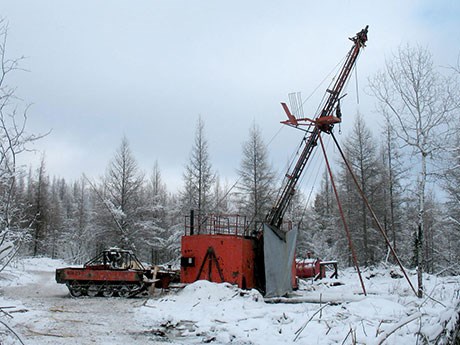Rainy River Resources plans production for 2016
With Detour Gold’s open pit operation 185 kilometres northeast of Cochrane already pouring gold and ramping up to commercial production, Northern Ontario’s next gold mine could be Rainy River Resources’ eponymous project at the other end of the province.
Rainy River’s vice-president and COO Michael Mutchler made the prediction during a presentation at a luncheon organized by the Canadian Institute of Mining and Metallurgy’s Toronto branch December 6th.
The property, located 418 kilometres west of Thunder Bay, boasts an NI 43-101-compliant resource of six million ounces of measured and indicated gold and approximately 11 million measured and indicated ounces of silver.
Two preliminary economic assessments have been done on the property –in November 2011 and August 2012 – and a feasibility study is currently underway.
Approval of an environmental assessment is expected by mid-2014 and operating permits should be in place by mid-2015, leading to production the following year.
The combined open pit and underground operation is projected to produce 308,000 ounces of 1.45g/t gold and 478,000 ounces of silver annually for the first 10 years of the project at a cash cost of $486 per ounce (net of silver credits), according to Mutchler. The plan is to ramp down 700 metres and to begin mining higher-grade ore underground beginning in year three. Lower grade gold will be stockpiled and milled beginning in year 11 for the duration of the proposed 16-year mine life.
However, there are several other discoveries on the property, another six kilometres of trend to explore and indications that gold mineralization extends to 1,200 metres below surface, so the mine life could easily stretch to 30 years, said Mutchler.
Overlaid by 30 metres of clay till and devoid of outcrops, the region saw no historical mining and very little exploration prior to 1987 when a till sampling program by the Ontario Geological Survey made an interesting discovery. Nuinsco Resources had some modest drill results through the ’90s, but not enough to turn down Rainy River Resources’ offer to take it off their hands for $2.5 million and 2.4 million shares.
The project has several positives over and above the six million measured and indicated ounces of gold.
“It’s not like a lot of projects where you have to build a 250-kilometre road and a 250-kilometre powerline,” said Mutchler. “We have year-round road access and we’re 18 kilometres away from a powerline.
“We’re also 50 kilometres from the Town of Fort Frances, a depressed logging and pulp and paper community where 300 workers were just laid off a few weeks ago. We view this as a big advantage for us because pulp and paper millwrights make good gold millwrights and loggers make good miners.”
The company has also succeeded in developing a close working relationship with the Fort Frances Chiefs Secretariat, representing six First Nation communities, and has a memorandum of understanding with the Big Grassy First Nation.
“Several First Nations are our biggest proponents,” said Mutcher. “They’re helping us with the other First Nations to explain why the project is good for the area and for their community.”
On top of everything else, it’s mining-friendly Northern Ontario, “where we don’t expect to be expropriated anytime soon,” he added.
Data used for the property’s resource estimates comes from more than 1,700 holes representing more than 700,000 metres of drilling, including a significant amount of jewelry box drilling at 10.5-metre spacings.
The PEA projects a 20,000 tonne per day mill, pre-production capital costs of $694 million and open pit sustaining capital costs of $340 million.
Long lead-time items are already being ordered, said Mutchler.



.jpg;w=120;h=80;mode=crop)